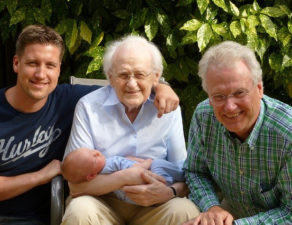When I meet with people for the first time who are interested in estate planning, their focus is usually on after-death planning. Whether their concern is minimizing estate taxes, planning for minor or spendthrift children, or simply passing assets to the next generation as quickly and efficiently as possible, nearly every meeting begins with a discussion on planning for death and the preparation of related documents, such as a Last Will and Testament or revocable trust. This is a shortsighted approach.
More important than planning for death is planning for that period of time between your golden years and death, where you may become disabled and incapacitated. I like to refer to this period as “the space between”. I often joke with clients that dying is not the problem. Becoming disabled and incapacitated – that is a problem.
It is sometimes difficult to redirect someone’s attention to this topic when they have geared themselves up for a discussion about their death. I am very sensitive to this since most people wait many years before they find the nerve to finally talk about their death. Then they meet with me and I throw them a curveball about incapacity and disability. But once we start talking about how “the space between” can be a tumultuous time in a person’s life, I usually grab their attention.
Once you die, the game is over. Your assets are no longer needed to cover the cost of your care. It is during “the space between” that you run the risk of losing a considerable amount of assets to the cost of your care. In order to fully appreciate this risk, one must consider the probability of falling ill and the possibility of requiring long-term care, and then the limited options to pay for the cost of that care. It quickly becomes apparent that there are a limited number of ways to pay for the cost of long-term care and without proper planning, there is a high probability that you will spend a considerable amount of assets on your care, whether in a nursing home or while receiving care at home. This is why planning for “the space between” is my primary focus as an elder law attorney.
No one likes to think about becoming disabled or losing their capacity but compounding that with the significant loss of assets is usually intolerable for most. In order to properly plan, one must consider planning techniques such as an irrevocable Medicaid Trust and a properly drafted power of attorney together with a statutory gifts rider. These are documents that work to protect your assets if you require long-term care. A Last Will and Testament does not protect your assets. So often I hear people say to me, “doesn’t my will protect me?” or worse, “my assets are protected because I have a revocable trust”. These documents do not protect your assets, they simply provide a mechanism to pass your assets to the next generation.
A typical estate planning package includes a Medicaid Trust in addition to your Last Will and Testament. A properly drafted Medicaid Trust is one of the only techniques available to you to protect your assets if you fall ill and require nursing home care. As many of you know there is a 5-year lookback period when you transfer assets, including transferring assets to a Medicaid Trust. How many of you only have a Last Will and Testament?
Thus, when you decide to meet with me, be prepared to talk about “the space between” and remember, dying is the easy part. And if I shake your hand and tell you that I hope you die of a sudden heart attack, perhaps you can appreciate my rationale.
Salvatore M. Di Costanzo is a partner with the firm of Maker, Fragale & Di Costanzo, LLP located in Rye, New York, and Yorktown Heights, New York. Mr. Di Costanzo is an attorney and accountant whose main area of practice is elder law and special needs planning. He is a member of the National Academy of Elder Law Attorneys and a frequent author and lecturer on current elder law and special needs topics. Since 2013, Mr. Di Costanzo has been selected each year by the rating service, Super Lawyers as a New York Metro leading elder law attorney. He can be reached at (914) 925-1010 or via e-mail at smd@mfd-law.com. Visit his practice specific website at www.plantodayfortomorrow.com.









